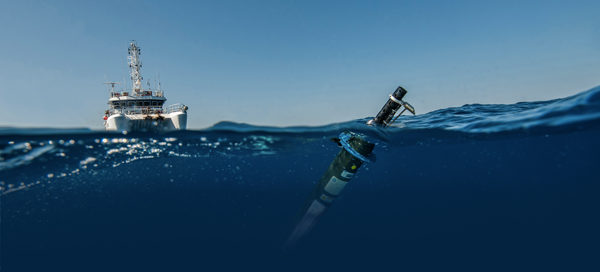- PRODUCTS
- MODEL LIST
- APPLICATIONS
- SUPPORT
- SALES/SERVICE
- BLOG
- ABOUT
Biogeochemical Monitoring

Photo by Christoph Gerigk © Sea-Bird Scientific
Monitoring of the ocean response to climatic and anthropogenic forcing is critical to understanding the impacts on the global carbon cycle and its ecosystems’ responses. Fundamental changes in the oceans’ biogeochemical cycles, driven largely in response to increased atmospheric CO2 concentrations, are already underway. Increasing evidence of large-scale ocean acidification and resultant deoxygenation has emphasized the need to understand the impacts on biogeochemistry and ecosystem dynamics.
- Observing a Western Mediterranean overturn event with a Navis BGC autonomous profiling float, a Sea-Bird Scientific case study, provides information on generating data sets to monitor slope-to-basin beiogeochemical fluxes and processes.
- Biogeochemical Monitoring of the Oceans Using Autonomous Profiling Floats, published in Ocean News & Technology, provides information on Sea-Bird Scientific solutions.
- Using Biogeochemical Models to Optimize Sampling Design for Biogeochemical Profiling Float Arrays, a CSIRO poster presentation, provides information on a joint Australia-India Joint Indian Oceean Bio-Argo project.
A large number of Sea-Bird Scientific sensors are used in biogeochemical monitoring due to their ability to get inter-comparable data:
| Parameter | Moored | Shipboard Deployments | Profiling Floats | AUV/ROV |
|---|---|---|---|---|
|
CTD |
37/16plusV2/16plus-IM V2 |
9plus/ |
41/61 |
49/GPCTD |
|
Dissolved Oxygen |
SBE 63 |
SBE 43 |
SBE 63 |
SBE 43F (GPCTD) |
|
pH |
SeaFET V2/ |
SBE 18/ |
Float pH |
|
|
Nitrate |
SUNA V2 |
SUNA V2/ |
Deep SUNA |
Deep SUNA |
|
Chlorophyll a |
ECO |
ECO |
ECO/ |
ECO Puck |
Case Studies
- Case Study - Paul Allen Foundation pH Sensors, Greg Ikeda, December 2018
- White Paper: Radiometer Calibration Transfer, Sea-Bird Scientific, September 2018
- Case Study: Autonomous Systems Help To Understand Nutrient Sources Within The St. Lucie Estuary, Ian Walsh, December 2017
- Case Study: Measuring Nitrate in Puget Sound Using Optical Sensors, Sea-Bird Scientific, November 2017
- Case Study: Comparing ISFET and Glass Electrode pH Sensors Part 1: Stable Bath Test, Greg Ikeda, June 2018
- Case Study: Identifying Oil In Water With The Seaowl UV-A™ Fluorescence and Backscattering Instrument, Ian Walsh, March 2018
- Case Study: High-Resolution Biophysical Observations in an Underway Sampling Application, Kim Martini, Sea-Bird Scientific, June 2017
- Case Study: Long-Term Water Quality Monitoring Deployments with the Sea-Bird Scientific HydroCAT-EP, Doug Wilson et al. May 2017
- Case Study: Real-Time Data from NOAA PMEL Ocean Climate Station Moorings, Kim Martini, Sea-Bird Scientific, March 2017

